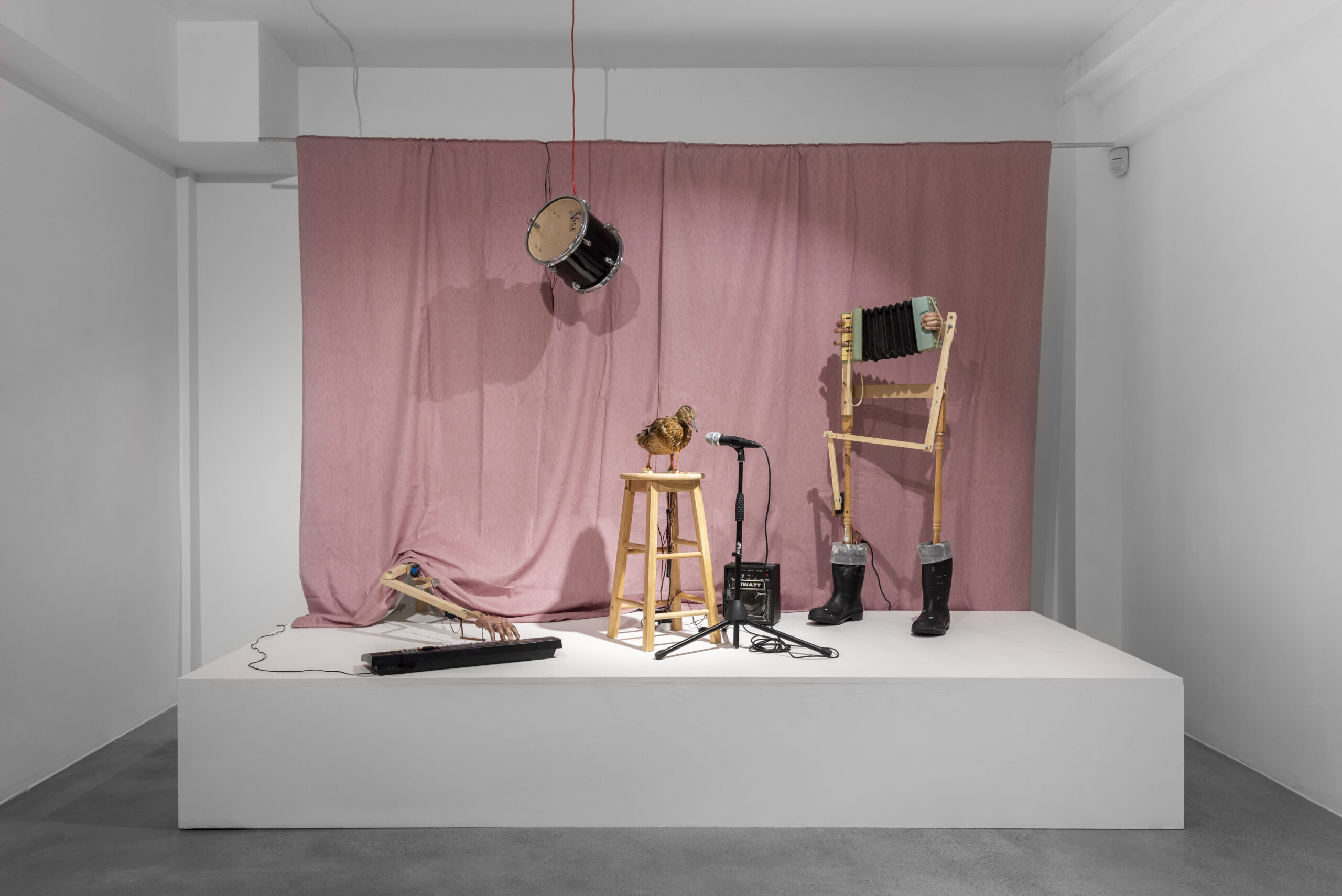Tobias Bradford and Ferdinand Evaldsson share an interest in psychology, memory and fears, which they process using various crafts techniques. In their studios, the two artists engage in time-consuming work, carving, moulding and painting motifs in materials such as wood, gelatine and papier-mâché. The physical and tactile processes, where hand meets material in the studio, are transferred to the exhibition space, where Bradford’s mobile sculptural installations meet Evaldsson’s pigmented wood panels. The exhibition at Bonniers Konsthall is designed as a visual and aural totality, where the works of the two artists appear in the friction between various mental states.
The Maria Bonnier Dahlin Foundation grant recipients 2021
8 dec 202116 jan 2022
Tobias Bradford (b. 1993) borrows concepts from puppetry, illusionism and robotics. With moving and sounding sculptures, he explores the relationship between body and machine, with the interplay of human desires and technological progress as a pervading theme. His works are often self-portraits in the form of mechanised body parts and musical instruments. In repetitive patterns, the sculptures manifest childhood memories but also various obsessions and compulsive thoughts. The comparatively pointless actions performed by the sculptures (such as trembling or knocking) seem to be a subtle rebellion against society’s incessant demand to perform and produce. We are reminded of the artist’s fascination for spiritual worlds and telepathy in works such as Restless (2019), an ambulating table that wanders off when it perceives a human presence. Here, the wireless signals can be compared to a form of otherworldly communication.
The mechanisms of Tobias Bradford’s sculptures are always openly revealed and intentionally look like simple DIY jobs. In this way, he illustrates the fragility of both bodies and technology; like a cyborg or human-machine creature in between doomsday prophecies and utopian visions of the future. A key work in the exhibition is Stage Fright (2021), an enactment of a concert where the ill-matched band consists of a nervous accordion player, an arhythmic self-playing drum, a keyboardist hiding behind a kitsch backdrop – all conducted by a singing duck that has forgotten the lyrics. This cross between sound and image, human and machine, comedy and seriousness, is characteristic of Bradford’s practice, where the gaps lead to a series of unexpected encounters.

Ferdinand Evaldsson (b. 1988) has a background in icon painting. At 16, he embarked on his apprenticeship and studied the orthodox Byzantine style. His studies took him to Cairo in the midst of the Arab Spring in 2011, where he continued his studies by learning the Coptic style, a tradition that was rediscovered in the mid-20th century after being forgotten since the 16th century. In between protests and the state of emergency in Cairo, he made serene visits to some of the world’s oldest monasteries. His experiences at Sinai, with its bright colours and small niches where the light trickles in, surrounded by the muted hues of sand are constantly revisited in his art.
Ferdinand Evaldsson’s imagery is linked to a personal amnesia and can be read as a monument to the struggle to regain control over something lost. As the artist voyages through his own personal memories, he combines them with the collective memory in relation to the traditional craft of icon painting. He mills and carves symbols and motifs into wood panels of various sizes. In the exhibition, one of these large works, Fight Flight Freeze II (2020) is suspended from the ceiling by thick brass-coloured chains, adding a new dimension to works that normally hang on walls. The title, Fight Flight Freeze refers to the term coined by the American physiologist Walter Bradford Cannon to describe the psychological response to perceived threats. In the adjoining gallery, a further two large-scale reliefs from the same series are shown, one of which is lined with brass sheets. Like the pigmented surface polished with saliva, the brass resembles the stone-like look of icons.

Both Ferdinand Evaldsson and Tobias Bradford explore memory in their art, with materials that are perpetually in motion. The wood, gelatine and pigments in Evaldsson’s paintings expand and swell over time. Bradford’s moving sculptures make noises and interact with visitors in the exhibition space. Together, the works in the exhibition portray personal and collective feelings (such as fear, longing, love and wonder), using craft technique as a means of grasping what is truly ungraspable.